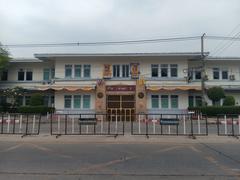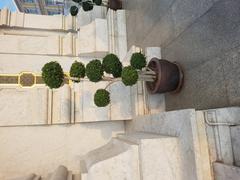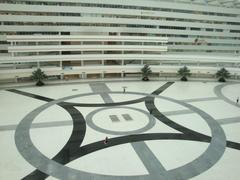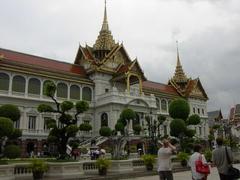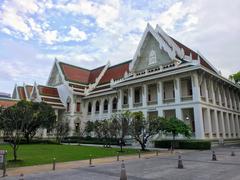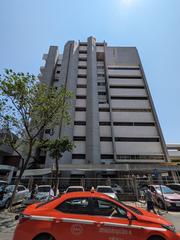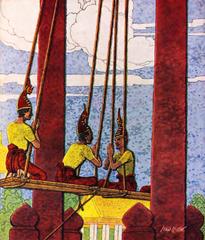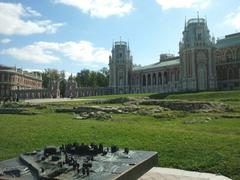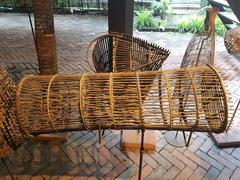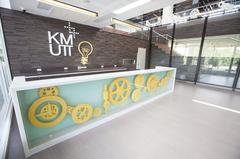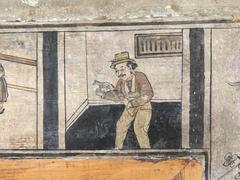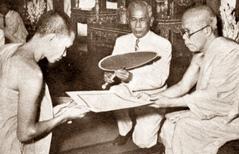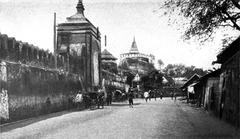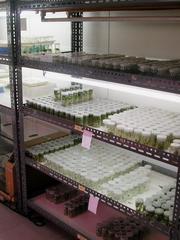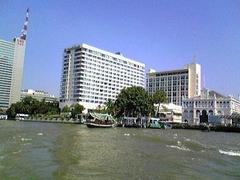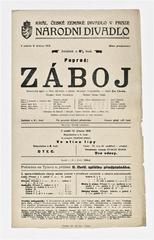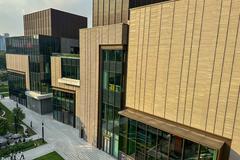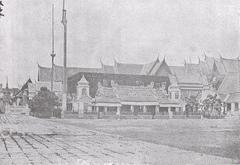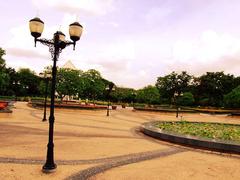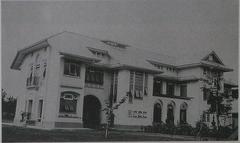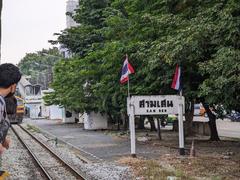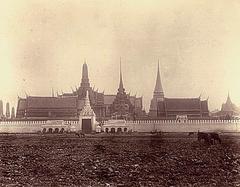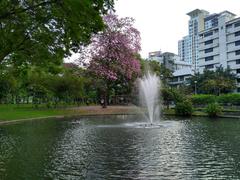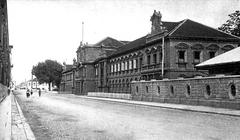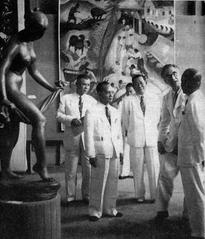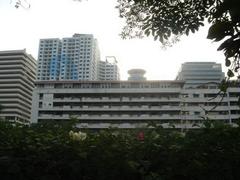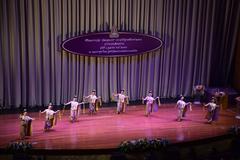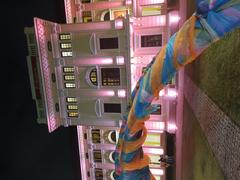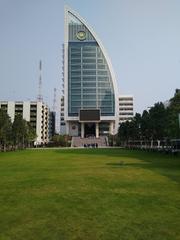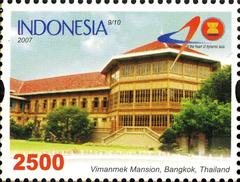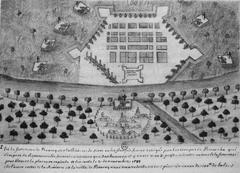Comprehensive Guide to Visiting Ban Silapin Artist House, Bangkok, Thailand
Publication Date: 23/07/2024
Introduction to Ban Silapin Artist House
Table of Contents
- Introduction
- Origins and Historical Background
- Transformation into an Artist Hub
- Cultural Significance
- Community Engagement and Education
- Visiting Hours and Tickets
- Travel Tips
- Nearby Attractions
- Economic Impact
- Preservation Efforts
- Future Prospects
- FAQ
- Conclusion
- Sources
Origins and Historical Background
Ban Silapin’s history is deeply intertwined with the Khlong Bang Luang canal, a vital waterway dating back to the Ayutthaya period. Originally a traditional Thai wooden structure from the early Rattanakosin period, the house has been meticulously preserved and restored by local artists and community members, maintaining its original charm while adapting to modern needs.
Transformation into an Artist Hub
The transformation of Ban Silapin into an artist house began in the early 2000s. A group of local artists, led by the renowned Thai artist Chumpol Akkapantanon, saw the potential of the house as a cultural and artistic hub. They envisioned a space where traditional Thai arts could be preserved and promoted, and where the community could engage with various forms of artistic expression.
Chumpol Akkapantanon invested his time and resources into renovating the house, creating a living, breathing space for art and culture. Today, Ban Silapin serves as a gallery, performance space, and community center, hosting a variety of events and activities that draw both locals and tourists.
Cultural Significance
Ban Silapin holds immense cultural significance for several reasons. Firstly, it serves as a repository of traditional Thai arts. The house regularly hosts puppet shows, a traditional form of Thai entertainment that dates back centuries. These shows, often performed by skilled puppeteers, are a highlight for visitors and provide a glimpse into Thailand’s rich cultural heritage. The puppets used in these shows are intricately crafted and are considered works of art in their own right.
In addition to puppet shows, Ban Silapin also hosts art exhibitions, workshops, and performances. These events cover a wide range of artistic disciplines, from painting and sculpture to dance and music. The house has become a nurturing ground for emerging artists, providing them with a platform to showcase their work and engage with the community.
Community Engagement and Education
One of the most significant aspects of Ban Silapin is its role in community engagement and education. The house offers a variety of workshops and classes aimed at both children and adults. These workshops cover traditional Thai arts and crafts, such as mask-making, pottery, and painting. By offering these educational opportunities, Ban Silapin helps to preserve traditional skills and pass them on to future generations.
The house also plays a crucial role in fostering a sense of community. It serves as a gathering place for locals, providing a space where people can come together to celebrate their shared cultural heritage. The events and activities hosted at Ban Silapin often involve community participation, further strengthening the bonds between residents.
Visiting Hours and Tickets
Ban Silapin is open to visitors daily from 10:00 AM to 6:00 PM. Admission is free, but donations are welcome to support the preservation efforts and community programs. Special events and workshops may have separate fees, so it’s best to check the official website or contact the house directly for detailed information.
Travel Tips
- How to Get There: Ban Silapin is accessible by boat, taxi, or public transportation. The easiest way is to take a boat along the Chao Phraya River to the nearby pier and then walk a short distance to the house.
- Best Time to Visit: The best time to visit is during the cooler months from November to February. Weekdays are generally less crowded than weekends.
- What to Bring: Comfortable walking shoes, a camera, and some cash for donations and local crafts.
Nearby Attractions
- Khlong Bang Luang Market: A vibrant market offering local delicacies, handmade crafts, and souvenirs.
- Wat Kamphaeng: A historic temple located nearby, known for its beautiful architecture and serene atmosphere.
- Baan Kudichin Museum: A museum showcasing the history and culture of the Portuguese-Thai community in Bangkok.
Economic Impact
Ban Silapin has had a positive economic impact on the local community. The house attracts a steady stream of tourists, which in turn supports local businesses. The nearby market, where visitors can purchase handmade crafts and local delicacies, benefits from the increased foot traffic. Additionally, the house provides employment opportunities for local artists and performers, contributing to the local economy.
Preservation Efforts
The preservation of Ban Silapin is an ongoing effort. The house requires regular maintenance to ensure that it remains in good condition. This includes structural repairs, as well as the preservation of the artworks and artifacts housed within. The community plays a vital role in these preservation efforts, with many locals volunteering their time and skills to help maintain the house.
In recent years, there have been efforts to secure funding for the continued preservation of Ban Silapin. These efforts have included fundraising events, grant applications, and partnerships with cultural organizations. The goal is to ensure that Ban Silapin remains a vibrant and thriving cultural hub for future generations.
Future Prospects
Looking to the future, Ban Silapin aims to expand its reach and impact. Plans are in place to develop new programs and initiatives that will attract a wider audience. This includes collaborations with international artists and cultural organizations, as well as the development of new educational programs. The house also aims to leverage digital technology to reach a global audience, with plans to offer virtual tours and online workshops.
FAQ
Q: What are the visiting hours for Ban Silapin?
A: Ban Silapin is open daily from 10:00 AM to 6:00 PM.
Q: Is there an admission fee?
A: Admission is free, but donations are welcome.
Q: How can I get to Ban Silapin?
A: You can reach Ban Silapin by boat, taxi, or public transportation. The easiest way is to take a boat along the Chao Phraya River to the nearby pier and then walk a short distance to the house.
Q: Are there any special events or workshops?
A: Yes, Ban Silapin hosts various events and workshops. Check the official website or contact the house for detailed information.

